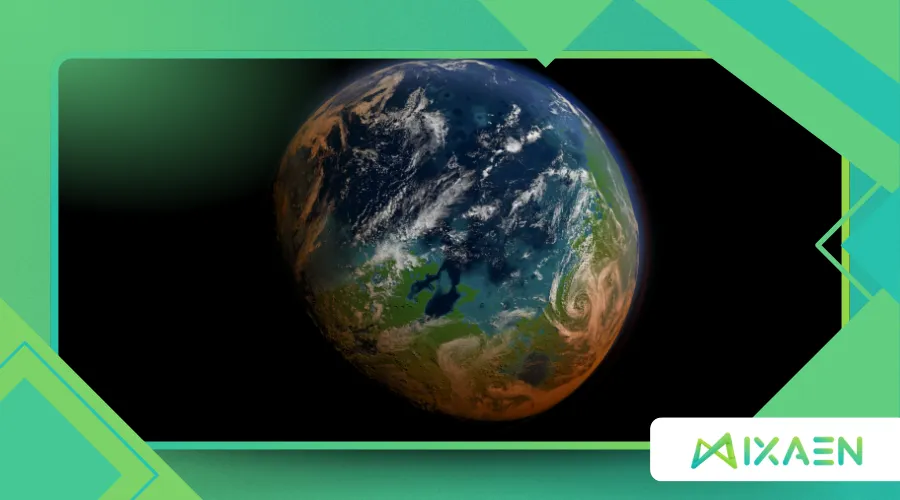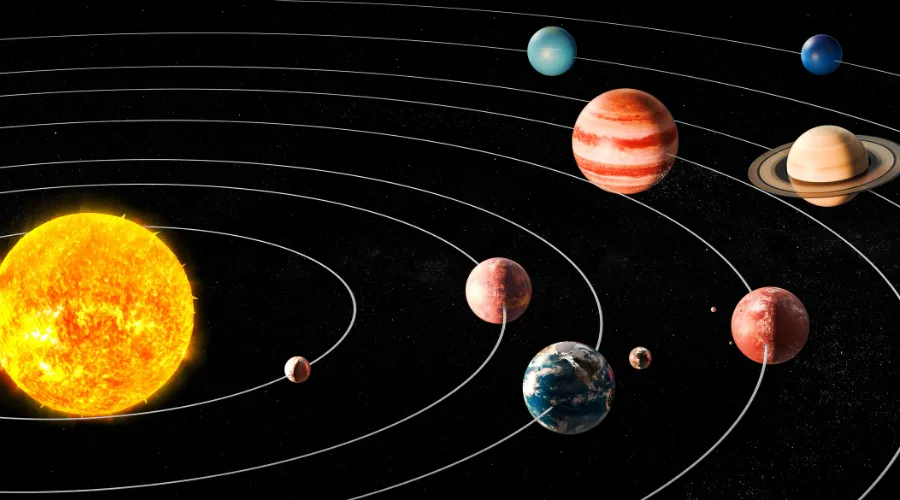Mars Terraforming: When Will We Be Able to Live on the Red Planet?

Mars terraforming has long been a tantalizing dream for scientists, futurists, and space enthusiasts.
Anúncios
The idea of transforming the barren Martian landscape into a habitable world evokes visions of humanity’s next great frontier.
But how close are we to making this sci-fi fantasy a reality?
Let’s explore the challenges, breakthroughs, and ethical dilemmas surrounding the Mars terraforming endeavor.
Understanding the intricacies of this complex process is key to appreciating both its potential and its limitations.
As we delve deeper into the subject, it becomes clear that Mars terraforming is not just a scientific challenge, but a multifaceted endeavor that encompasses technology, ethics, and human ambition.
The journey to making Mars habitable will require collaboration across various fields, including engineering, biology, and environmental science.
The Vision: Why Terraform Mars?
Before diving into the “how,” we must ask: why even attempt such an audacious project?
Mars presents a unique opportunity—a planet with a day length similar to Earth’s, accessible water ice, and a thin atmosphere that could theoretically be thickened.
Unlike Venus or Mercury, Mars sits within the Sun’s habitable zone, making it the most viable candidate for Mars terraforming in our solar system.
The potential for scientific discovery is immense.
Terraforming Mars could provide insights into climate change, planetary ecosystems, and even the origins of life itself.
Moreover, the technological advancements gained from terraforming efforts could have applications on Earth, addressing environmental challenges we currently face.
Elon Musk’s SpaceX aims to establish a permanent colony on Mars, but survival there would require more than domed cities.
True sustainability demands a breathable atmosphere, liquid water, and stable temperatures—goals that hinge on planetary-scale engineering.
This vision of a self-sustaining human presence on Mars could redefine our understanding of life beyond Earth.
The Science Behind Terraforming: Can We Thicken Mars’ Atmosphere?
One of the biggest hurdles is Mars’ thin atmosphere, which is about 1% as dense as Earth’s.
Without sufficient atmospheric pressure, liquid water can’t exist, and humans would need pressurized suits to survive.
So, how do we build an atmosphere from near-scratch?
1. Releasing CO₂ from Polar Ice and Soil
Mars has vast reserves of frozen CO₂ in its polar caps and adsorbed in its regolith (soil).
Scientists propose using orbital mirrors or greenhouse gas factories to vaporize these deposits, releasing enough CO₂ to trigger a greenhouse effect.
A 2018 NASA study, however, found that Mars lacks sufficient accessible CO₂ to achieve Earth-like pressure, meaning we’d need supplementary methods.
This limitation has led researchers to explore alternative strategies that could complement CO₂ release.
For instance, the use of microorganisms to produce greenhouse gases could be a sustainable approach to enhancing atmospheric density.
Additionally, ongoing robotic missions are gathering crucial data on Martian geology, which could inform future terraforming efforts.
2. Importing Greenhouse Gases
If native CO₂ isn’t enough, we might need to import gases like ammonia or methane from outer solar system moons.
This approach, while theoretically possible, would require staggering energy and logistical investment.
The feasibility of such an endeavor hinges on advancements in space travel and resource extraction technologies.
Moreover, the environmental impact of transporting materials across vast distances must be carefully considered.
Astrobiologists are also investigating the potential for utilizing Martian resources in situ, which could reduce the need for imports.
3. Artificial Magnetosphere
Mars lacks a strong magnetic field, leaving it vulnerable to solar winds that strip away its atmosphere.
One radical proposal involves placing a magnetic shield at Mars’ L1 Lagrange point to deflect solar radiation, allowing the atmosphere to stabilize over centuries.
This concept emphasizes the need for innovative engineering solutions to protect a terraformed Mars from atmospheric loss.
Additionally, understanding how solar winds interact with Mars’ current environment is crucial for developing effective mitigation strategies.
Research into magnetic fields on other celestial bodies may provide insights that could be applied to Mars.
++ Habitability Conditions: What Makes an Exoplanet Ideal

The Timeline: When Could Terraforming Begin?
Predicting a timeline for Mars terraforming is speculative, but experts break it into phases:
| Phase | Estimated Timeframe | Key Milestones |
|---|---|---|
| Initial Colonization | 2030s–2050s | First human settlements, domed habitats |
| Atmospheric Thickening | 2100–2200 | CO₂ release, temperature rise |
| Full Terraforming | 2300+ | Breathable air, stable ecosystems |
These estimates assume sustained political will, technological leaps, and economic feasibility—factors far from guaranteed.
The timeline also reflects the complexity of the challenges involved, which require not only technological advancements but also international cooperation.
As we approach the initial colonization phase, continuous research and development will be essential to overcome unforeseen obstacles.
Moreover, public interest and investment in Mars exploration will play a significant role in determining the pace of progress.
Ethical and Environmental Concerns
Beyond technical challenges, Mars terraforming raises ethical questions:
- Planetary Protection: Should we alter an entire planet’s ecosystem, potentially erasing any native microbial life?
- Resource Allocation: Would the trillions spent on terraforming be better used solving Earth’s crises?
- Unintended Consequences: Could a runaway greenhouse effect make Mars uninhabitable in new ways?
These ethical dilemmas necessitate a thorough examination of our motivations and responsibilities as we venture into space.
The potential for unforeseen consequences highlights the importance of conducting robust environmental impact assessments before initiating terraforming projects.
Additionally, public discourse and transparency in decision-making processes will be crucial for gaining societal support.
As we consider the implications of terraforming, we must also reflect on our stewardship of Earth and the lessons we can learn from it.
For more information on Mars exploration and terraforming, visit NASA’s Mars Exploration Program.

Alternative Approaches: Partial Terraforming & Paraterraforming
Given the immense timescales, some scientists advocate for “paraterraforming”—creating enclosed, Earth-like biomes rather than transforming the whole planet.
This could offer near-term habitability without the ethical and technical burdens of full-scale Mars terraforming.
Such biomes could serve as testing grounds for technologies and strategies that might eventually be applied to broader terraforming efforts.
Additionally, creating self-sustaining habitats may provide valuable insights into the challenges of living on Mars.
This approach could also mitigate some of the ethical concerns associated with altering an entire planet.
By focusing on localized environments, we can minimize our impact on any potential Martian ecosystems while still pursuing human habitation.
Conclusion: A Dream Within Reach?
While Mars terraforming remains a distant prospect, each step toward colonization brings us closer.
Whether through atmospheric engineering, magnetic shields, or enclosed habitats, humanity’s future on Mars will demand innovation, patience, and global cooperation.
The Red Planet may one day be our second home—but not without overcoming extraordinary challenges first.
As we explore these possibilities, collaboration among scientists, policymakers, and the public will be essential.
The successful colonization of Mars could open up new frontiers for humanity, expanding our horizons beyond Earth.
Would you volunteer for a one-way trip to a terraformed Mars?
The debate is just beginning.
